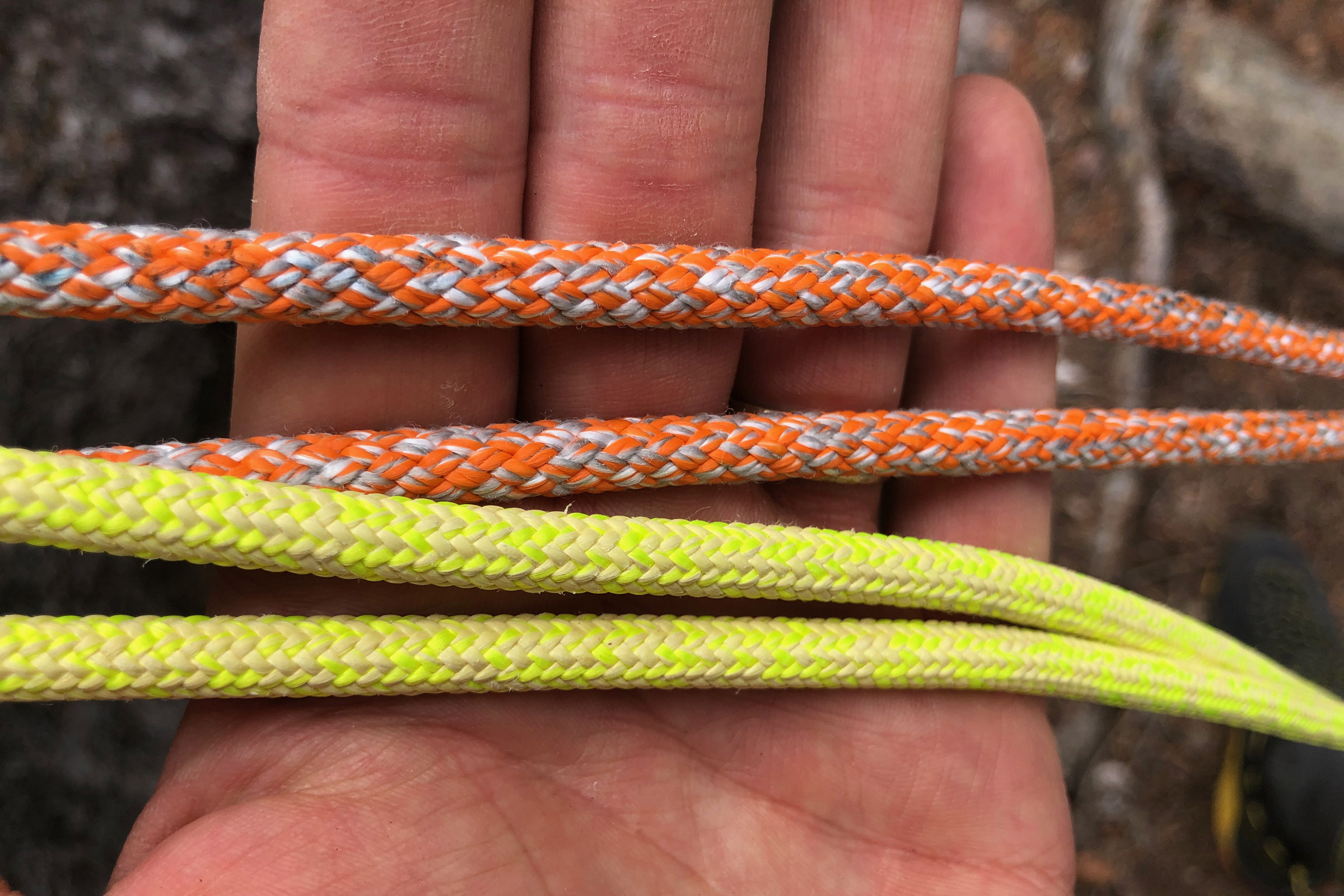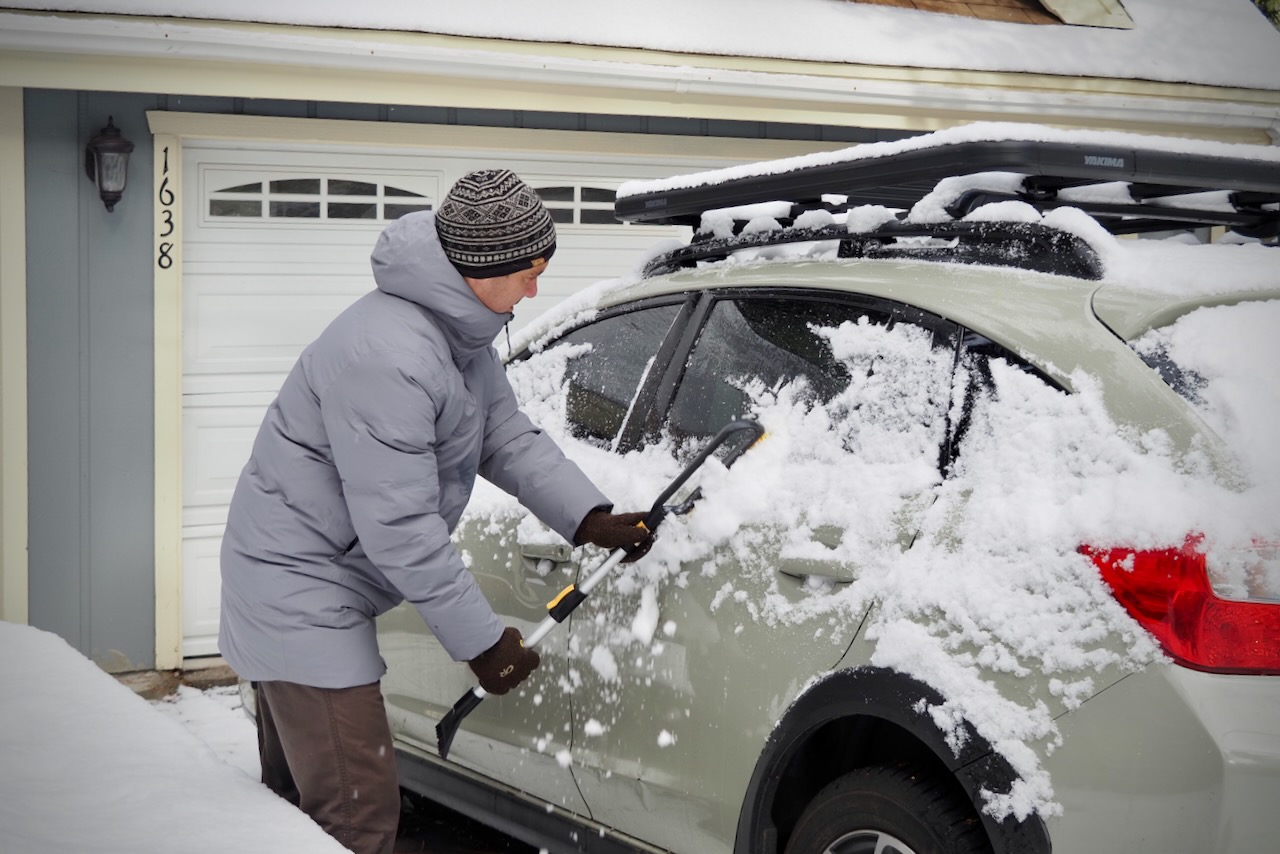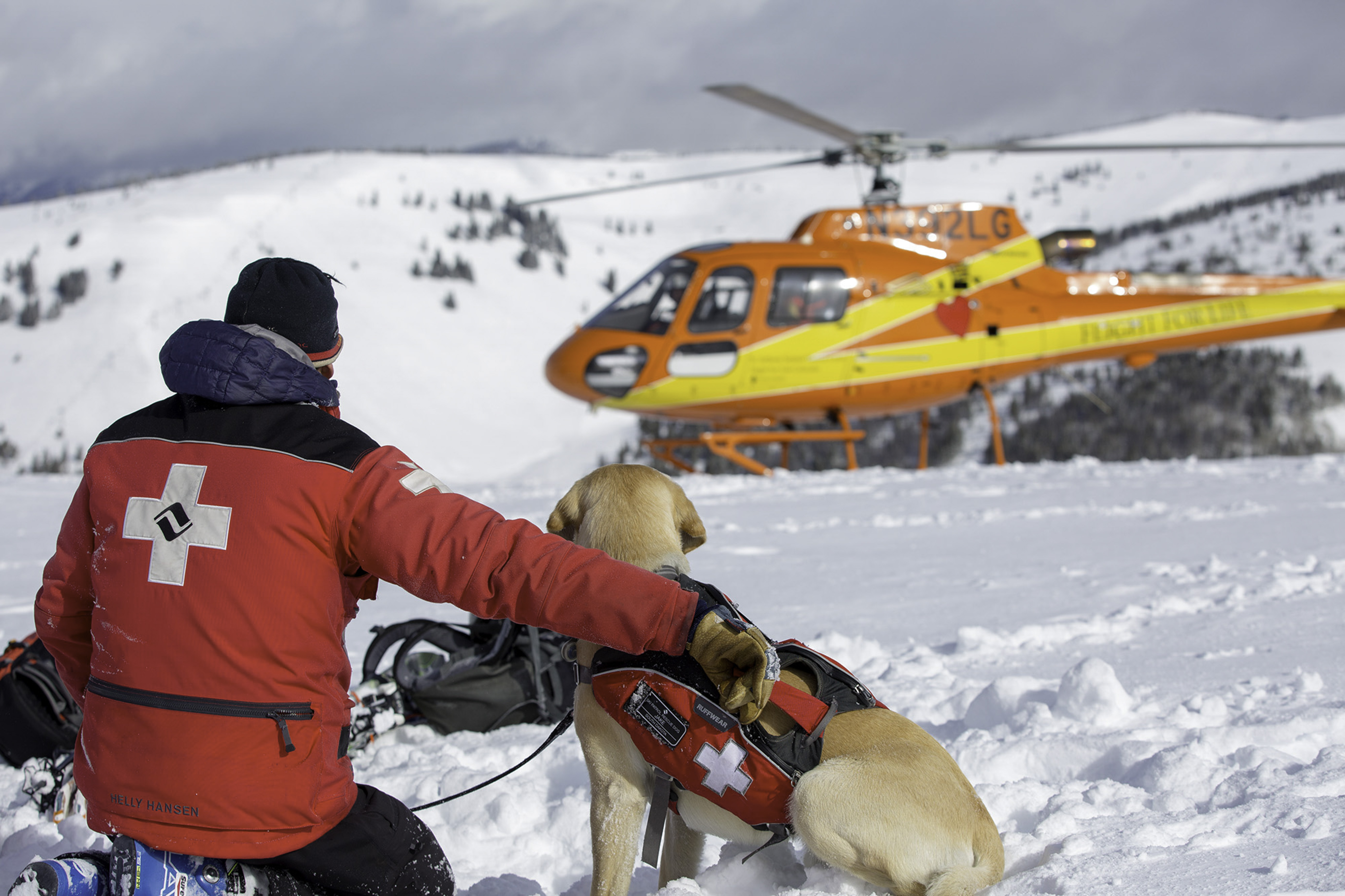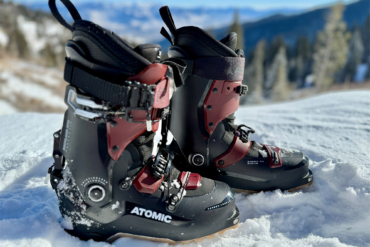The first time I saw the Mammut Glacier hyperstatic cord in person, I let out a chuckle. No way was I going to rappel on that. Commit my full body weight and life to that piece of string? Over a big cliff? Pass.
Later that summer, my two climbing partners and I tied into a skinny cord on Mt. Rainier’s Ingraham Glacier, knowing full well that it had the strength to catch a crevasse fall, hold a dangling climber, and withstand the forces of hauling them out of the mountain safely.
The next season I found myself staring down the barrel of a nasty-looking couloir guarded by wind slabs. No chance was I dropping in without being sure they weren’t going to peel off and flush me out with them. This time, I was psyched to pull out yet another hyperstatic cord, Petzl’s RAD Line, to hip belay a ski cut.
While the price of hyperstatic cords hasn’t grown on me over the past year, my confidence and psych for them definitely have. And I think that’s for the best; these cords are mega cool, ultrathin, and featherweight, but they demand caution and respect for their limitations.
In short: Petzl’s RAD Line ($460) and Mammut’s Glacier Cord ($485) are the two best hyperstatic cords in the business for mountaineers and backcountry skiers. They pack down tiny, weigh a fraction of what your nylon climbing rope weighs, and provide an excellent margin of safety for certain scenarios. What they don’t do is catch lead falls or go easy on your credit card. All those factors have a lot to do with how the two brands design and construct their cords.
- Diameter: 6 mm
- Weight per meter: 22 g
- Material(s): High-modulus polyethylene (HMPE), polyester, nylon
- Certification(s): CE EN 564, UKCA
- Static elongation: Less than 2%
Pros
- Lightweight
- Packable
- Great for crevasse rescue/travel, haul maneuvers, rappelling, and skimo
Cons
- Not made for belay climbing
- Expensive
- Weight: 0.9 oz.
- Certifications: CE EN 567, UIAA
- Rope diameter: 6 mm
- Hardware main fabric: 66% Dyneema, 34% Aramide
Pros
- Highly compressible
- Lightweight
- Dry-treated
- Great for crevasse rescue/travel, haul maneuvers, rappelling, and skimo
Cons
- Not meant for belay climbing
- Expensive
Shopping for Climbing Ropes Is Overwhelming
There are a lot of companies producing a lot of different climbing ropes for every conceivable application. To make it even more complicated, there is some universal nomenclature paired with each brand’s esoteric lingo.
Types of Climbing Ropes
As a starting point, there are three main categories of climbing ropes for outdoor adventuring: Dynamic, Static, and Hyperstatic.
Dynamic ropes are what you’re using in the vast majority of climbing situations, as they can accomplish nearly any task requiring a rope. Dynamic ropes absorb energy by stretching, which is accomplished by nylon construction.
They’ll stretch between 10% and 40%. That stretch allows you to belay a climber or catch a fall. And because the rope absorbs the vast majority of the energy, it lowers forces on anchors, protection, hardware, the belayer, and the lead climber.

For all intents and purposes, think of static ropes as rigid lines even though they may stretch up to 10%. Static ropes are designed for hauling gear (think multipitch or big wall scenarios) and other technical purposes like rappelling. But not for belaying.
Because they don’t stretch, they cannot absorb energy from a fall or any major force. A lead climber taking a fall on a static rope would be in serious danger. Fall forces would be transferred directly to the anchor, top piece of protection, and every other component of the safety system, which are not designed or rated to absorb that much force.
That’s where we get to the niche hyperstatic cords like the Petzl RAD and the Mammut Glacier Cord. As the name suggests, they’re even more rigid than static cords with a stretch of less than 2%. And of course, the same thing goes for hyperstatic ropes. You absolutely cannot belay a climber with one of these — it could be that climber’s last lead.
Hyperstatic Cords in Use

Hyperstatic cords, when used in the right context and within the manufacturers’ guidelines, offer some fantastic benefits over static and dynamic ropes. They’re also considered “experts-only” gear, meaning they require a thorough understanding of their limitations and how to use them safely. The margin for error is a fraction of what dynamic ropes offer. Incorrect use of life safety gear is deadly.
What are the contexts? Officially, Petzl and Mammut list crevasse rescue/travel, haul maneuvers, and rappelling. Again, and I can’t say this enough, both manufacturers explicitly prohibit any kind of lead climbing.

Rescues and Rappels
That means that both the Petzl RAD and Mammut Glacier Cord are excellent for glacier rope teams with the proper techniques. If someone on the rope team falls into a crevasse, Petzl’s research has shown that they are caught more easily by a hyperstatic cord. That’s likely because the force on the arresting teammates is more predictable.
Rappelling is also simpler on a hyperstatic cord. There’s no stretch-induced bouncing. However, it’s not as straightforward as with a typical climbing rope. Most belay devices, including those specifically designed for thin ropes, are not compatible with these tiny cords.
Even Black Diamond’s ATC Alpine Guide, designed for skinny ropes, is only rated for cords as small as 6.9 mm. So, rapping on the RAD or the Glacier Cord is best accomplished with an Italian (aka Munter) hitch, ideally with some added friction from an additional carabiner. Or a figure 8-style device. These skinny ropes are slippery — a prusik (or similar) backup is required.
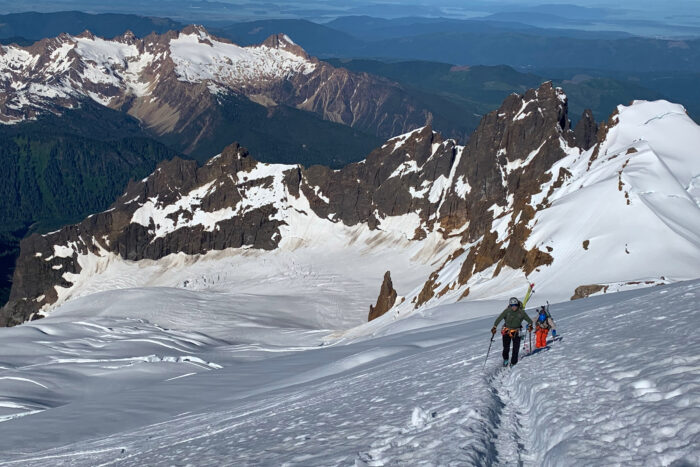
Ski Mountaineering
The last feasible application, neither banned nor endorsed by Petzl or Mammut, are belayed skiing and ski cuts — with a caveat. Ski cuts and belayed skiing allow skiers to navigate tricky couloir drop-ins or suspect snow bridges with an additional layer of safety. However, they cannot be belayed directly off a static anchor (i.e., one connected to rock or a snow anchor).
A dynamic anchor would need to be employed, which one guide described to me as a “meat anchor.” That is, the belayer’s body would provide the dynamic relief that the rope cannot (even if the belayer is backed up by a static anchor).
Petzl RAD Line vs. Mammut Glacier Cord: Head-to-Head Review

Both Mammut’s and Petzl’s hyperstatic cords are eye-wateringly light — 25 g/m and 22 g/m, respectively. My dynamic climbing rope for comparison, Mammut’s Alpine Dry 9.5mm, is 59 g/m. That’s almost triple the weight gram for gram. And that adds up over a 30m or 60m rope, the Glacier Cord being 1,500 g at 60 m, RAD Line at 1,320 g, and a typical climbing rope at 3,540 g.
Weight
A popular dual-rated mountaineering (half and twin) rope from Petzl, the Paso Guide 7.7mm, weighs in around 40 g/m, or 2,400 g for 60 m. That’s still nearly double what a hyperstatic cord weighs.
That extra weight adds significant versatility given the dynamic qualities and ability to catch falls. Now, throw it on your back with all your other gear and walk 10 miles for the weight differential to really set in.
Packability
Smaller in diameter also means a smaller packed size. Both the Glacier Cord and the RAD Line pack up super small. I ended up cutting the 60m Glacier Cord into two 30m sections for backcountry skiing versatility. At only 750 g and the size of three large bananas, I had no problem stuffing one half into the bottom of my pack for an extra margin of safety.
The packability also makes a big difference when you’re needing to stuff all the gear inside your pack for flying and traveling. The 6mm hyperstatic cords are roughly 38% smaller in terms of volume than the aforementioned dynamic single rope.

Strength
The Glacier Cord and the RAD Line are strong. Really strong — rated for 14kn and 12kn, respectively. But whipping on one of these on a static anchor would create impressive forces, all of which would be transferred directly to the climber’s body, the anchor, and the belayer. With so little stretch to absorb any of the energy, chances are something would give even if it’s not the rope.
Materials

The Petzl RAD Line came out first, but Mammut didn’t simply duplicate it. Both rope designs are unique.
Petzl’s rope is constructed with a mix of high-modulus polyethylene (HMPE), polyester, and nylon. The HMPE is a critical component. It has a strength-to-weight ratio eight times greater than steel.
It adds significant strength to the sheath to allow for compatibility with toothed progress capture devices like Petzl’s Microtraxion and ascenders like the Tibloc. Without it, the sheath of such a skinny cord would shear from the core with normal loading. According to Petzl’s tests, the RAD Line is able to withstand 4-5kn of force with its own toothed devices.

Mammut’s Glacier Cord, on the other hand, is made from 66% Dyneema (a brand name for an ultrahigh molecular weight polyethylene) and 34% aramide.
Mammut doesn’t make progress capture devices or ascenders. Instead, the Glacier Cord is built to be compatible with the popular Tibloc and Microtraxion and passes the 4kn tear threshold set forth by CE EN 567. Mammut also throws in its venerable dry treatment to add extra protection and friction for rappelling.

Both ropes handle impressively given the unflinching materials. The RAD Line’s sheath is noticeably rougher in the hand, whereas Mammut’s cord sports a tighter weave.
I found that a two-carabiner Italian hitch provided plenty of friction rappelling on both ropes. If anything, Mammut’s dry treatment gave it the edge in the friction department — but just so slightly. Both ropes played nicely with my Sterling Hollowblock prusik as well.
Conclusion

Hyperstatic ropes, in the right contexts, offer massive weight savings and packed-size benefits over half, twin, or single dynamic ropes. That comes at the cost of versatility and dollars. Petzl’s RAD Line and Mammut’s Glacier Cord are the two industry leaders, each with their own design.
Despite the unnervingly small diameter and low weight, these ropes meet minimum strength requirements and work great with Petzl’s Microtraxion and Tibloc accessories, which are some of the best in the business.
Which rope reigns supreme? Mammut’s Glacier Cord sports three benefits that Petzl’s RAD Line does not: a dry treatment, 2kn higher strength rating, and an included stuff sack/throw bag. It’s also 12% heavier and more expensive. So, there’s not an easy answer on this one like you and I might have been hoping for.
Pick a rope, get intimately familiar with its limitations, find training on proper technique, and practice with it in low-consequence scenarios. That’s the recipe for success for either one.
